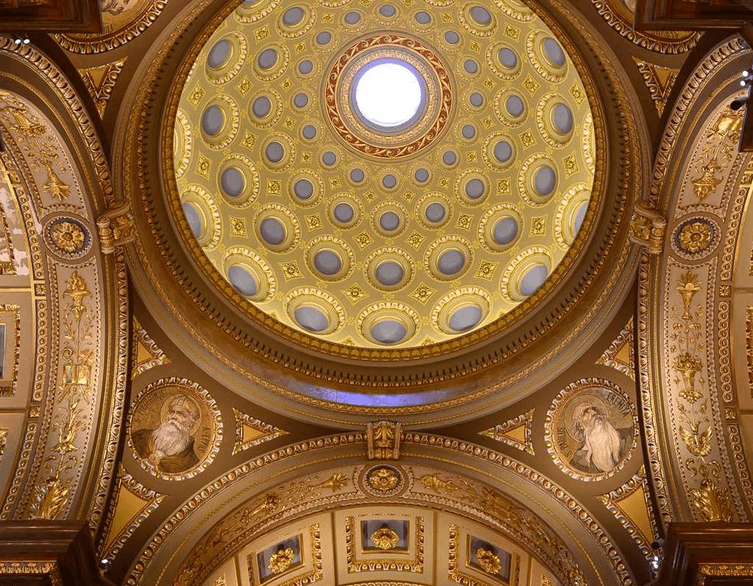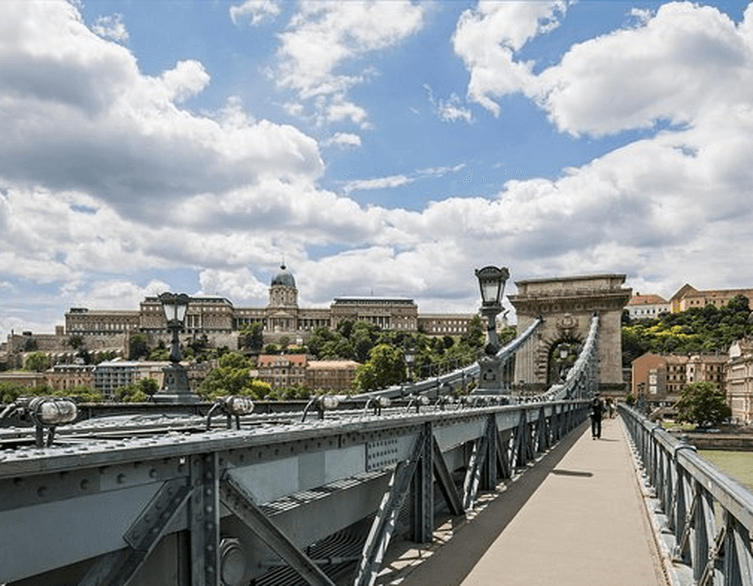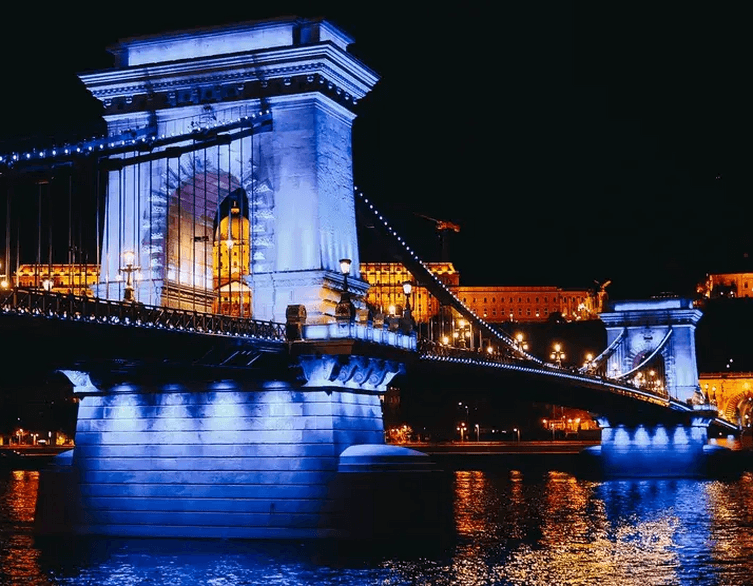The Iconic Chain Bridge: An Engineering Marvel Connecting Buda and Pest

One of the most famous landmarks in Budapest is the majestic Széchenyi Chain Bridge spanning the Danube River, connecting the historic cities of Buda and Pest. This remarkable suspension bridge is not only an architectural marvel but also holds immense historical significance as a symbol unifying the Hungarian capital.
Historical Importance
The Széchenyi Chain Bridge was the first permanent stone bridge to connect the two sides of the Danube in Budapest. Until then only ferries connected the two sides of the city, but they were subject to weather changes and high water of the Danube. In order to provide a connection and a stable trade route between the two sides of the city, Count István Széchenyi proposed the erection of the Chain Bridge. He played a leading role in the founding and the construction of the bridge, which bears his name to this day.
Constructed between 1839 and 1849, it played a crucial role in linking Buda and Pest, which were separate towns at the time before officially uniting into one city in 1873. Designed by English engineer William Tierney Clark, the bridge’s construction was a monumental undertaking that used cutting-edge suspension technology.
During the Hungarian Revolution of 1848, the chain links were destroyed by the withdrawing Austrian army, but the bridge was rebuilt and reopened in 1849. It has remained an iconic landmark and symbol of a united Budapest ever since. The Chain Bridge also suffered significant damage in World War II when retreating German troops blew up two of its spans in 1945, but it was meticulously restored to its former glory by 1949.
Best deals of Budapest
Architectural Splendor
The Chain Bridge is a stunning example of 19th-century engineering and architecture. Its distinctive design features two massive stone towers adorned with intricate carvings and sculptures, including the iconic lion statues guarding the entrances. At 375 meters (1,230 feet) long, the bridge’s road deck is suspended by two massive iron chains weighing over 12,000 kilograms each. The chains are anchored to the riverbanks and supported by the stone towers, creating an elegant suspension structure.
When first constructed, the Chain Bridge had one of the longest suspended spans in the world at 202 meters (663 feet). Its overall design blends classical and modern styles, with the ornate lamps lining the bridge adding to its charm, especially when illuminated at night.
Its portals are adorned with regal lion-head capstones and the coat of arms of Hungary, crowned with a wreath of leaves, symbolizing the nation’s pride and strength. Guarding the abutments at both ends stand two imposing stone lions, masterfully carved by the renowned sculptor János Marschalkó. These magnificent feline sentinels, installed in 1852, have withstood the test of time, surviving even the ravages of World War II. Despite the urban legend that these lions lack tongues, a closer inspection from above reveals the intricate details, including their tongues, meticulously crafted by the sculptor’s hand.
Getting There
Located in the heart of Budapest, the Chain Bridge connects the historic Buda Castle District on the west bank with the vibrant Pest side of the city to the east. Its strategic position makes it a popular attraction offering stunning panoramic views. On the Buda side, visitors can explore the UNESCO-listed Castle area with its museums, St. Matthias Church and Fisherman’s Bastion. The Pest side features an impressive array of architectural gems. Surrounding Roosevelt Square one of the most notable structures is the Hungarian Academy of Sciences, a grand neo-Renaissance building that commands attention with its imposing façade and intricate details. Nearby, the Gresham Palace, now housing the Four Seasons Hotel, stands as a testament to Art Nouveau elegance, with its intricate stonework and ornate decorative elements. To the north of the Chain Bridge visitors can marvel at the grandiose Hungarian Parliament Building.
Whether strolling across this elegant 19th-century bridge, admiring its architectural beauty, or taking in the breathtaking vistas of the Danube and Budapest’s cityscape, the Chain Bridge is an essential part of any visit. With its powerful suspension design, historical significance and prime location connecting Buda and Pest, this engineering masterpiece offers an unforgettable experience in one of Europe’s most captivating capitals.
Related news
Related events
Related attractions

































